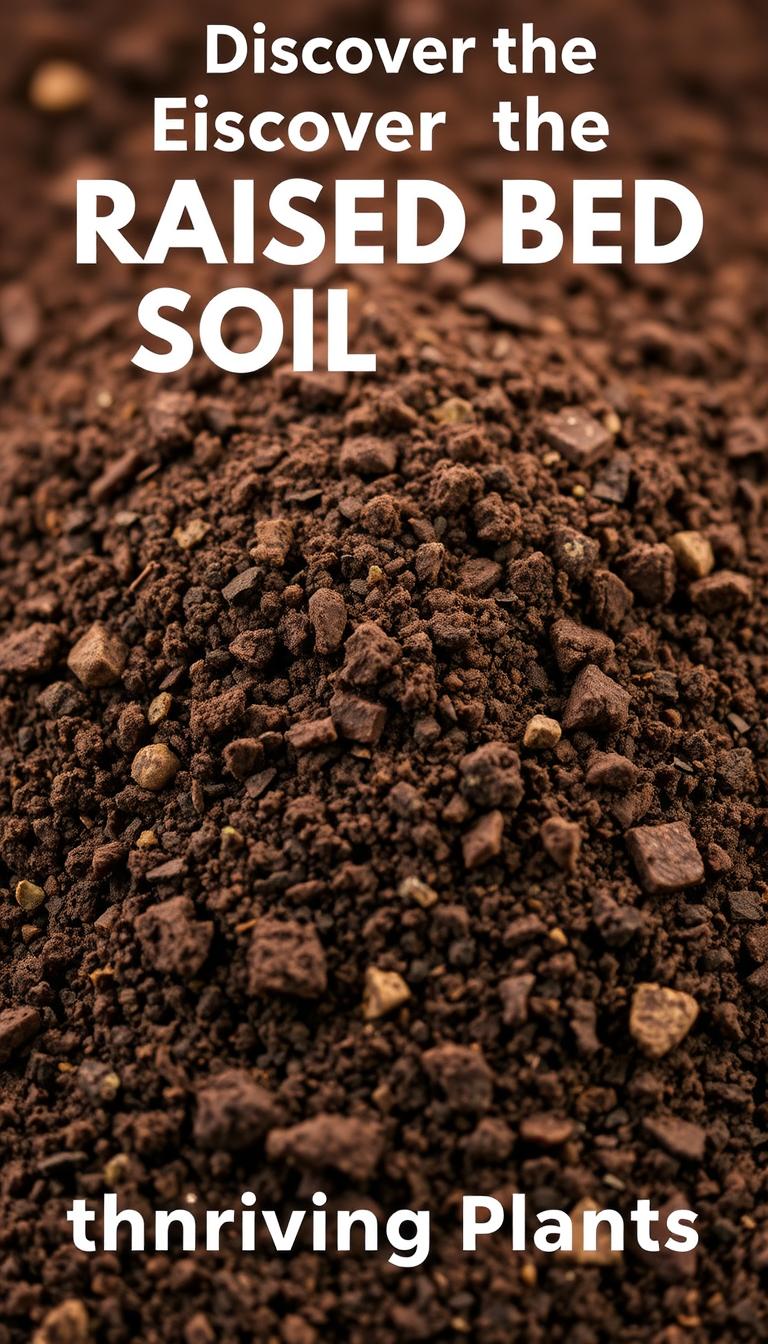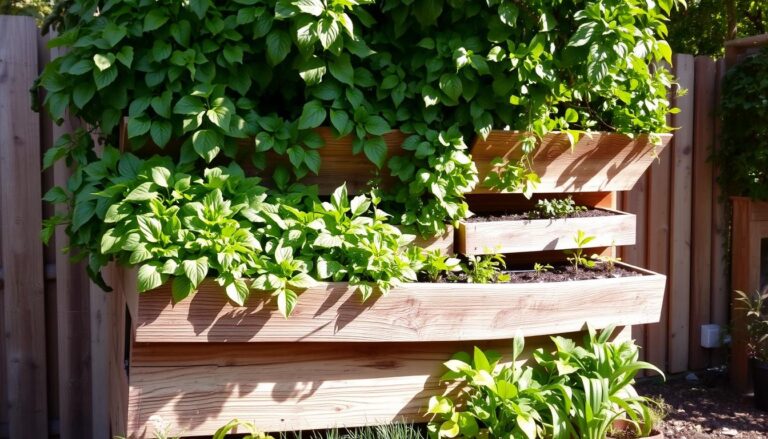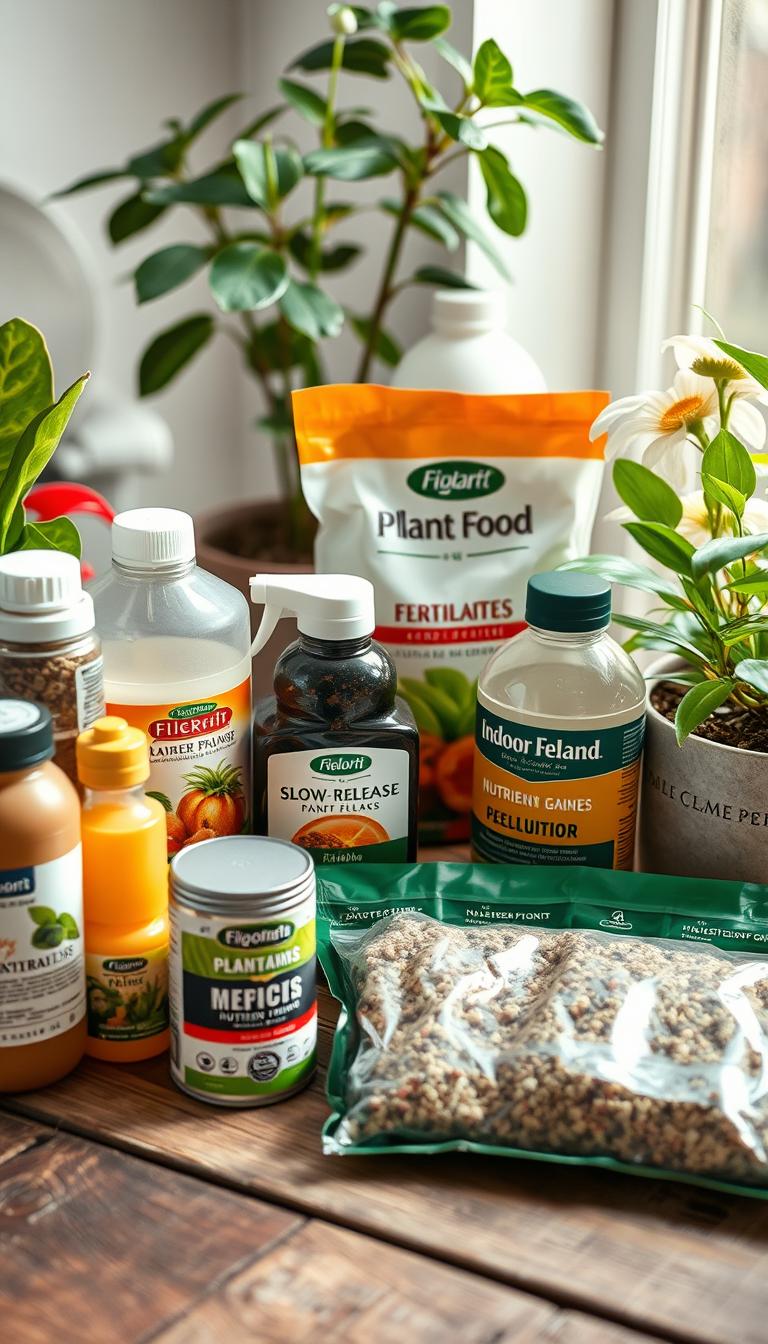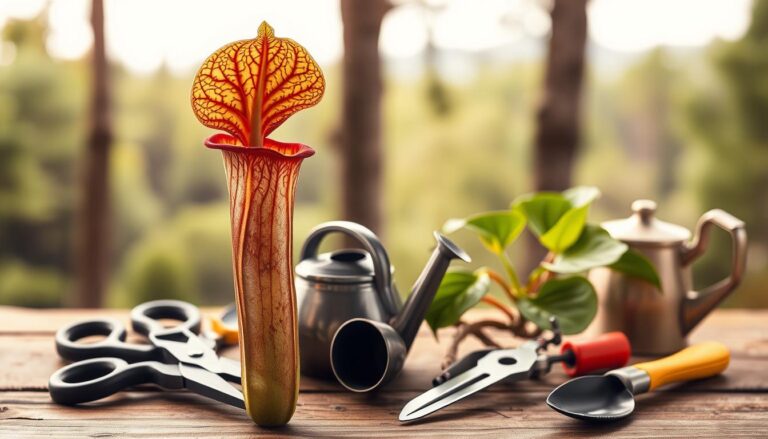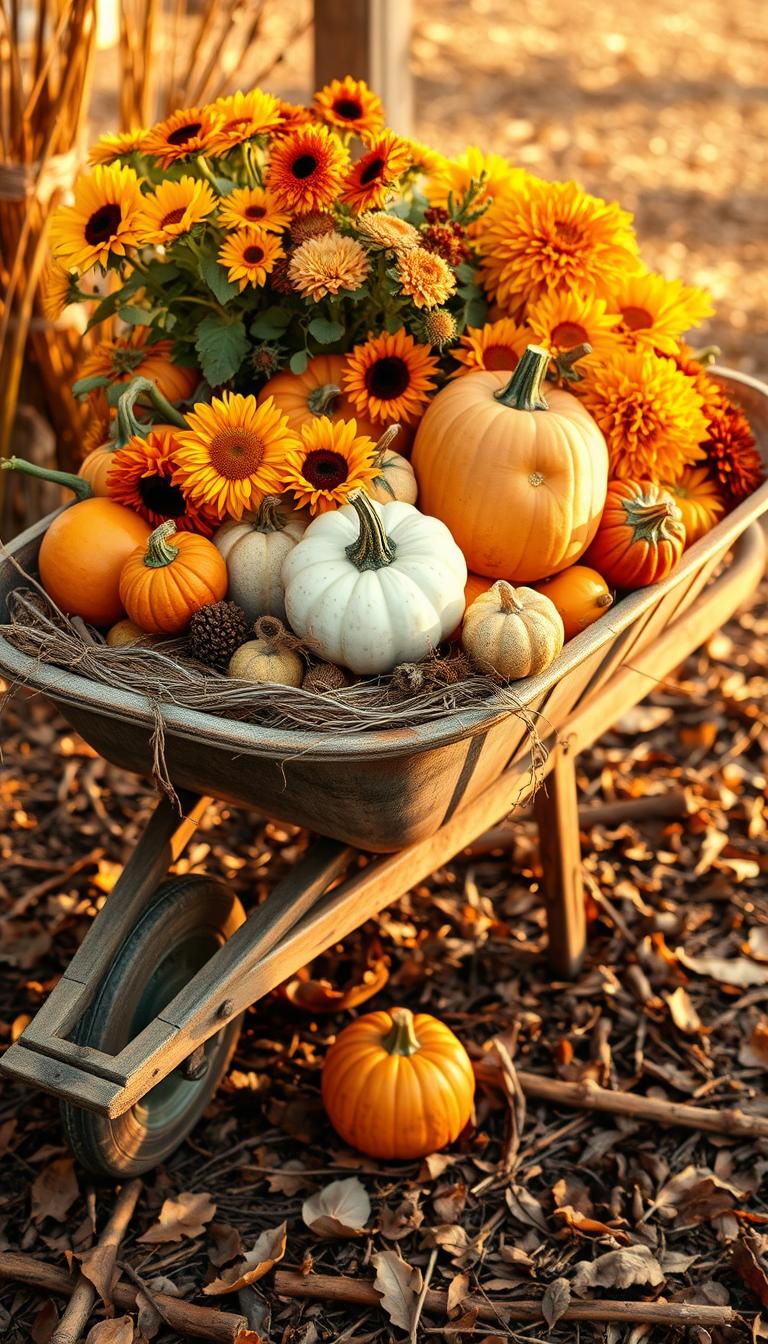Discover the Perfect Raised Bed Soil for Thriving Plants
Remember the first time you planted seeds, hoping for a lush garden, only to watch them struggle in stubborn dirt? I do. Years ago, my spinach wilted while my neighbor’s tomatoes flourished like jungle vines. The difference? Their secret wasn’t magic—it was the foundation beneath their plants.
Just like baking a cake, your garden’s success starts with the right ingredients. Studies comparing popular blends—like Mel’s Mix and the Perfect Soil Recipe—show that balanced nutrition and drainage can double harvests. Bagged options might save time, but custom mixes let you tailor textures for carrots that crunch or roses that riot with color.
Why fuss over dirt? Because garden beds above ground behave differently. They warm faster in spring but dry out quicker in summer. The ideal growing medium acts like a sponge—holding moisture without drowning roots. Unlike traditional plots, these elevated spaces demand lighter, fluffier blends enriched with organic matter.
Table of Contents
Over the next sections, we’ll decode soil testing kits and reveal maintenance tricks that keep your green friends thriving year after year. Ready to dig deeper?
Understanding the Importance of Quality Soil in Raised Beds
Gardens flourish not by chance but through the careful crafting of their underground ecosystem. What lies beneath your plants determines whether they merely survive or explosively thrive. Superior growing medium acts as both pantry and plumbing system, storing nutrients while managing moisture flow.
Power of Decayed Natural Materials
Rich organic matter acts like a sponge, holding up to 20 times its weight in water. This includes compost, aged manure, and leaf mold. These materials slowly release nitrogen and phosphorus—essential fuels for plant growth. One study showed gardens with 30% organic content produced 40% more vegetables than those using mineral-heavy blends.
Earth’s Original Blend vs. Tailored Formulas
Unmodified native soil often becomes concrete-like in containers. Enhanced mixes combine mineral particles with biological activators. Consider these comparisons:
- Natural earth: May drain poorly in confined spaces
- Custom blends: Maintain air pockets for root breathing
- Local dirt: Carries existing weed seeds
- Designed mixes: Start weed-free with balanced pH
Adding decomposed leaves or grass clippings transforms dense clay into crumbly gold. Your carrots will push through effortlessly, while tomato roots access oxygen more easily. Structure matters as much as nutrition—without proper texture, water either pools or vanishes too quickly.
Key Ingredients for the Ideal Raised Bed Soil
Imagine lifting a handful of earth that crumbles perfectly between your fingers—neither dusty nor sticky. That texture comes from precise combinations of materials working in harmony. The right blend creates a thriving ecosystem where roots spread easily and nutrients flow freely.
The Role of Peat Moss and Vermiculite
Peat moss acts like a thirsty sponge, absorbing 10-20 times its weight in water. This acidic material helps balance alkaline conditions while keeping moisture available to plants. Pair it with vermiculite—a mineral that aerates mixtures and prevents compaction. Together, they create air pockets that let roots breathe even during heavy rains.
Incorporating Organic Matter and Compost
Decaying plant materials feed both your crops and beneficial microbes. Vegetable scraps, grass clippings, and manure-based compost release nitrogen gradually. University trials show gardens using 25% compost yield 35% more produce than those relying solely on fertilizers.
Try these nutrient boosters:
- Leaf mold for fungal networks that strengthen root systems
- Worm castings to supply trace minerals
- Spent coffee grounds for slow-release acidity
Mixing 30% organic matter with mineral components creates a balanced foundation. Your plants will reward you with deeper colors, crisp textures, and abundant harvests.
How to Test and Mix Your Raised Bed Soil
Ever wonder why some gardens burst with life while others barely grow? The answer often lies in what happens before seeds ever touch the ground. Testing and blending your growing medium transforms guesswork into guaranteed results.
Conducting a Comprehensive Soil Test
Start with a simple jar test. Fill a clear container one-third full with your current blend. Add water until it’s two-thirds full, shake vigorously, then let it settle for 24 hours. Layers will form—sand at the bottom, silt in the middle, clay on top. Ideal ratios show equal parts sand and silt with minimal clay.
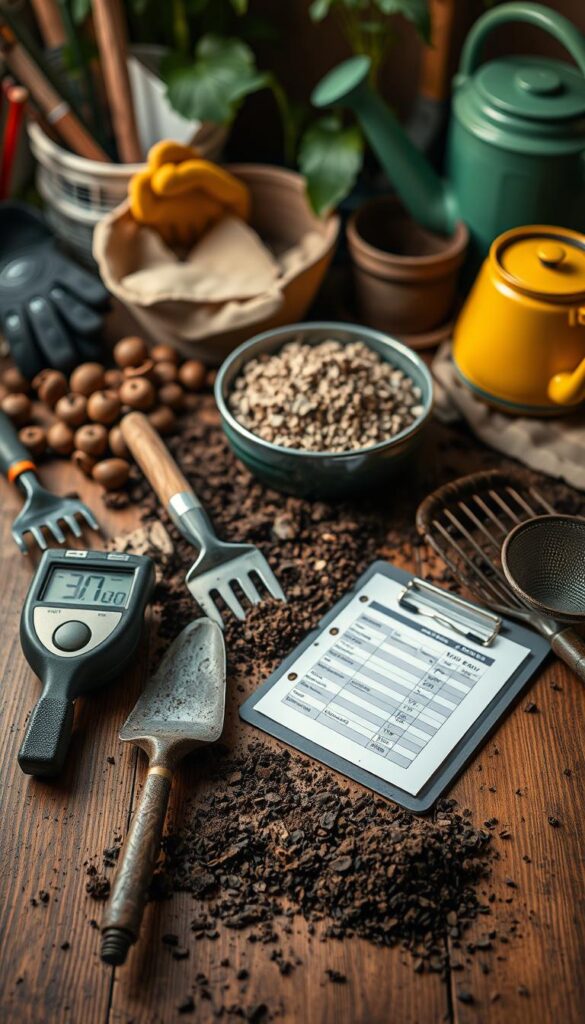
Next, check pH levels using a $15 kit from any garden store. Most vegetables thrive between 6.0 and 7.0. If your reading falls outside this range, add lime to raise pH or sulfur to lower it. For nutrient analysis, mail samples to your local extension office—they’ll detail nitrogen, phosphorus, and potassium levels.
Expert Mixing Techniques for Optimal Results
Layer amendments like a lasagna. Spread compost first, then vermiculite, followed by peat moss. Use a broad-tined fork to blend vertically—this prevents compacting layers while ensuring even distribution. “Turn the pile three times minimum,” advises USDA horticulturist Linda Chalker-Scott.
Test moisture retention by squeezing a handful. Properly mixed material should:
- Hold its shape briefly before crumbling
- Feel damp but not drip water
- Allow roots to penetrate easily
Adjust ratios based on your plants’ needs—add more perlite for succulents, extra compost for heavy feeders like corn. Your final mix should drain freely yet retain enough moisture to sustain growth between waterings.
Diverse Approaches: Mel’s Mix vs. Perfect Soil Recipe
What if your garden’s success hinges on choosing between two proven recipes? Both Mel’s Mix and the Perfect Soil Recipe promise thriving plant growth, but their methods differ like night and day. Let’s break down which blend delivers better results for your greens.
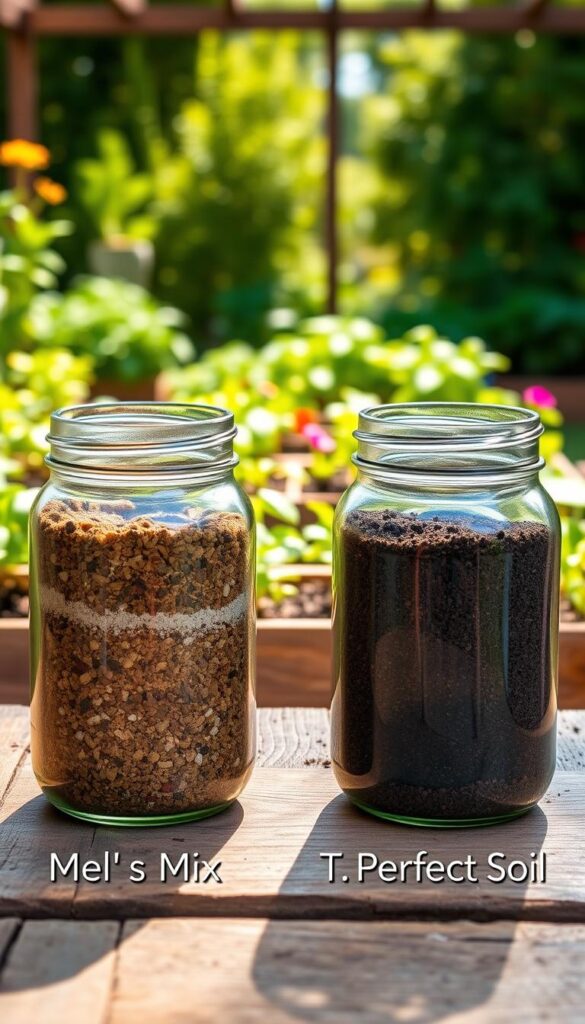
Mel’s Mix: Pros, Cons, and Cost Considerations
This equal-parts combo of compost, peat moss, and vermiculite wins fans for its lightweight texture. Trials show crops grow 25% faster in this mix compared to standard topsoil. But there’s a catch—it costs $1.50-$2 per cubic foot. You’ll need to refresh compost annually, adding $30-$50 per bed each season.
Perfect Soil Recipe: Nutrient Balance and Longevity
This formula uses 40% compost, 40% topsoil, and 20% aeration materials. The added mineral content means nutrients last 18-24 months. One study found tomato yields increased by 18% versus Mel’s Mix after two growing seasons. Initial costs run lower ($0.75-$1.25 per cubic foot), but blending requires more labor.
| Feature | Mel’s Mix | Perfect Soil Recipe |
|---|---|---|
| Cost per cubic foot | $1.50-$2 | $0.75-$1.25 |
| Drainage | Excellent | Good |
| Nutrient retention | 1 year | 2 years |
| Best for | Container gardens | In-ground integration |
Choose Mel’s Mix for quick results in enclosed spaces. Opt for the Perfect Recipe if you’re blending with native earth and want lasting nutrients. Your plant roots will vote with their vigor.
Choosing the Best Raised Bed Soil for Thriving Plants
Your garden’s potential hides in the ingredients you mix. Like a chef selecting premium spices, your choice of materials determines whether plants merely survive or truly thrive. High-quality components create living earth that breathes, drains, and nourishes roots effectively.
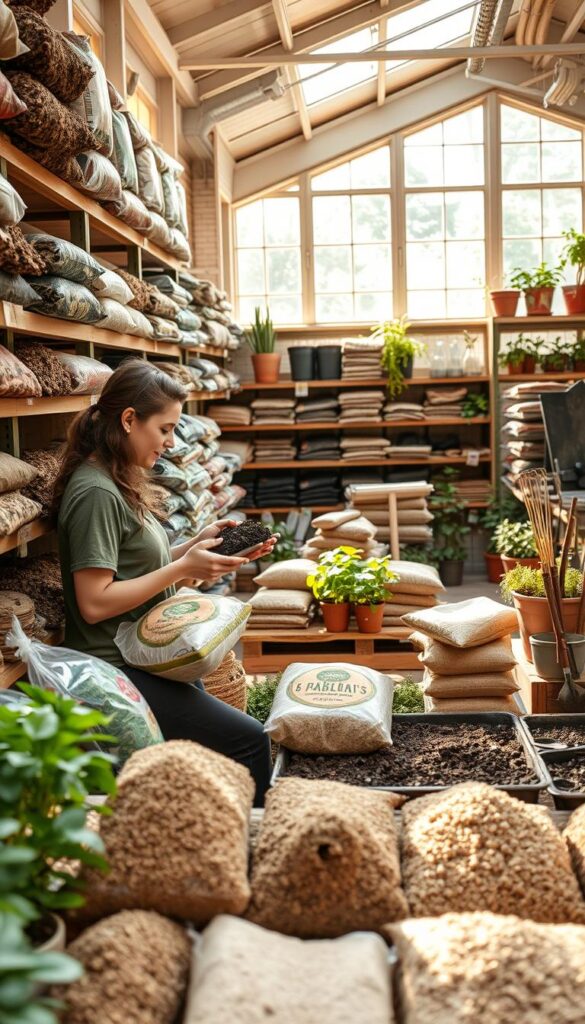
Not all peat works the same. Sphagnum peat moss improves water retention in sandy blends, while reed-sedge peat balances dense clay. “The right peat type acts like a thermostat for moisture,” notes horticulturist Tara Smith. Buyers often save 30% by purchasing bulk sphagnum bales versus bagged options.
Bulk buying transforms affordability without sacrificing performance. Local landscape suppliers offer fresh compost by the cubic yard—enough to fill three 4×8 beds for under $100. Check these factors when sourcing:
| Material | Bulk Cost | Bagged Cost | Texture Impact |
|---|---|---|---|
| Sphagnum Peat | $12/cu yd | $4/3 cu ft | Light, fluffy |
| Compost | $25/cu yd | $8/1 cu ft | Crumbly, rich |
| Vermiculite | $45/cu yd | $15/4 cu ft | Airy, porous |
Test blended samples before committing. Squeeze a handful—proper texture holds shape briefly before crumbling. Avoid mixes with visible wood chunks or sour odors, which signal incomplete decomposition.
Balance cost and quality by combining bulk peat with bagged aeration materials. This hybrid approach cuts expenses by 40% while maintaining drainage and nutrient density. Your plants will show their approval through vigorous growth and abundant harvests.
Analyzing Water, Drainage, and Soil Composition
Ever notice how water behaves differently in sand versus clay? This simple observation holds the key to preventing root rot and drought stress. Proper moisture management requires balancing two forces: absorption and flow.
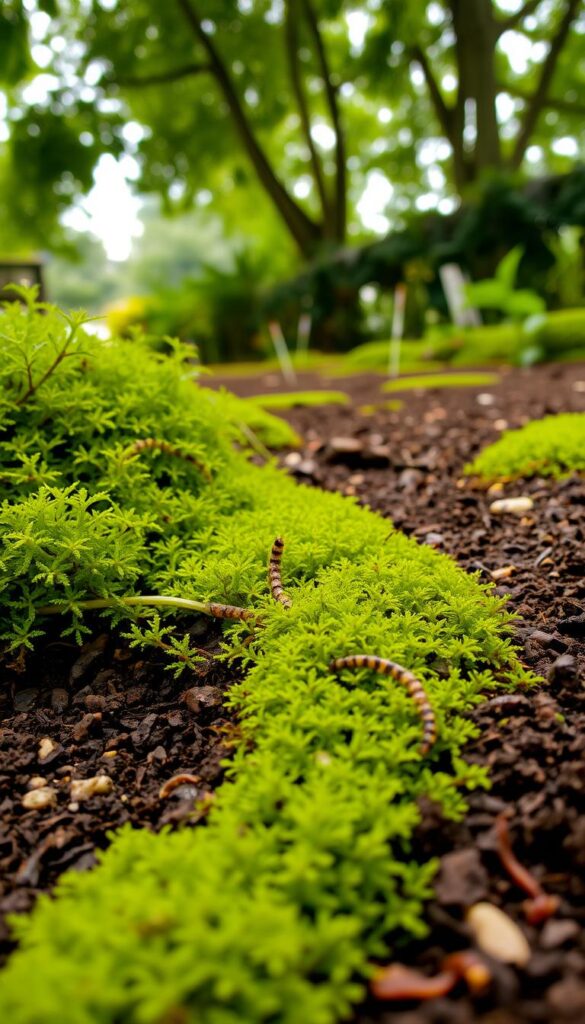
Managing Drainage and Watering Needs
Drainage efficiency determines whether roots drown or thrive. During heavy rains, gardens with 30% coarse sand shed excess water 50% faster than clay-heavy blends. Create a gravel base layer (2-3 inches) beneath your mix to accelerate runoff.
Use these techniques to maintain ideal moisture levels:
- Install perforated pipes in low-lying areas
- Mix shredded bark to improve water penetration
- Check soil dampness daily with a finger test
Addressing Soil Compaction Concerns
Compacted earth suffocates roots and blocks water movement. A University of Illinois study found tilling compacted areas increased carrot yields by 22%. Prevent this issue by:
- Adding peat moss to maintain loose texture
- Using broadfork tools instead of rototillers
- Applying 1-inch compost layers every spring
Moss growth signals excessive moisture but also acts as a natural moisture regulator. Strategically placed moss patches can reduce watering frequency by 15% in shaded areas. Monitor your garden’s level regularly—settling below 1 inch per year indicates healthy structure.
Managing Nutrient Levels and Soil Fertility
Your garden’s productivity depends on reading its invisible language. Soil tests translate this hidden dialogue into actionable insights. A typical report reveals nitrogen levels, phosphorus ratios, and micronutrient deficiencies—all critical for growth optimization.
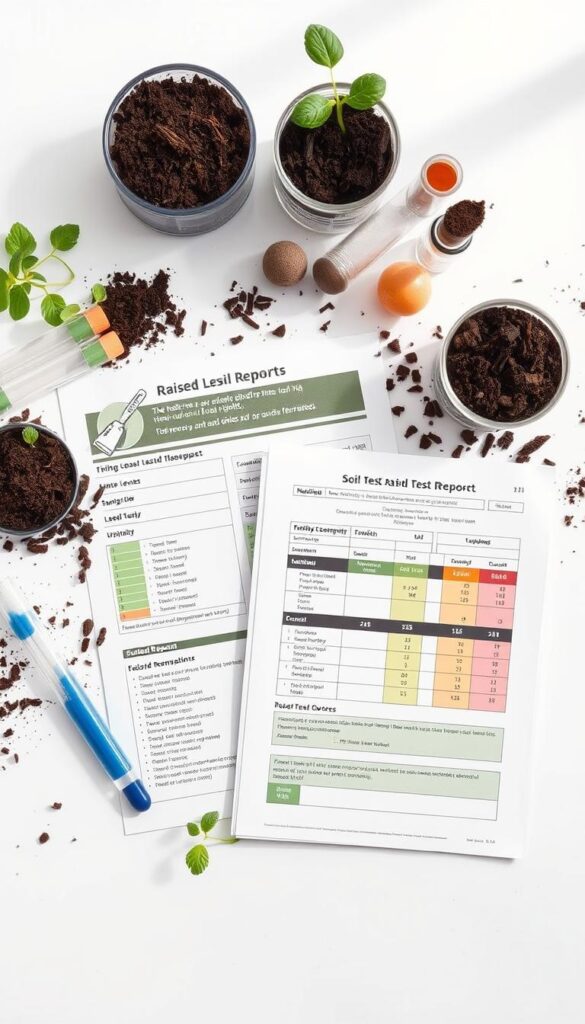
Interpreting Soil Test Nutritional Data
Look for three key numbers: nitrogen (N), phosphorus (P), and potassium (K). Ideal vegetable ranges are:
| Nutrient | Optimal Range | Deficiency Signs |
|---|---|---|
| Nitrogen | 20-40 ppm | Yellow leaves |
| Phosphorus | 30-50 ppm | Purple stems |
| Potassium | 150-250 ppm | Brown edges |
Organic matter percentages below 5% signal poor microbial activity. Boost this with compost or aged manure—each 1% increase can improve water retention by 20,000 gallons per acre.
Balancing pH for Optimal Vegetable Growth
Most crops thrive at 6.0-7.0 pH. If tests show acidity below 6.0, apply pelletized lime (5-10 lbs per 100 sq ft). For alkaline conditions above 7.5, mix elemental sulfur (1-2 lbs per 100 sq ft).
Weeds often indicate imbalances. Dandelions flourish in compacted earth with low calcium, while chickweed prefers high phosphorus. Address these invaders by:
- Adjusting pH to recommended levels
- Increasing organic matter to suppress weed seeds
- Using mulch to block light from emerging sprouts
Regular testing every 2-3 years maintains growth momentum. Remember: fertile earth requires both chemical harmony and thriving biology.
Cost and Quality Considerations in Soil Selection
What if saving money on garden supplies could cost your plants their vitality? Smart growers balance budgets with biological needs. Choosing between bulk materials and pre-packaged options impacts both your wallet and harvests.
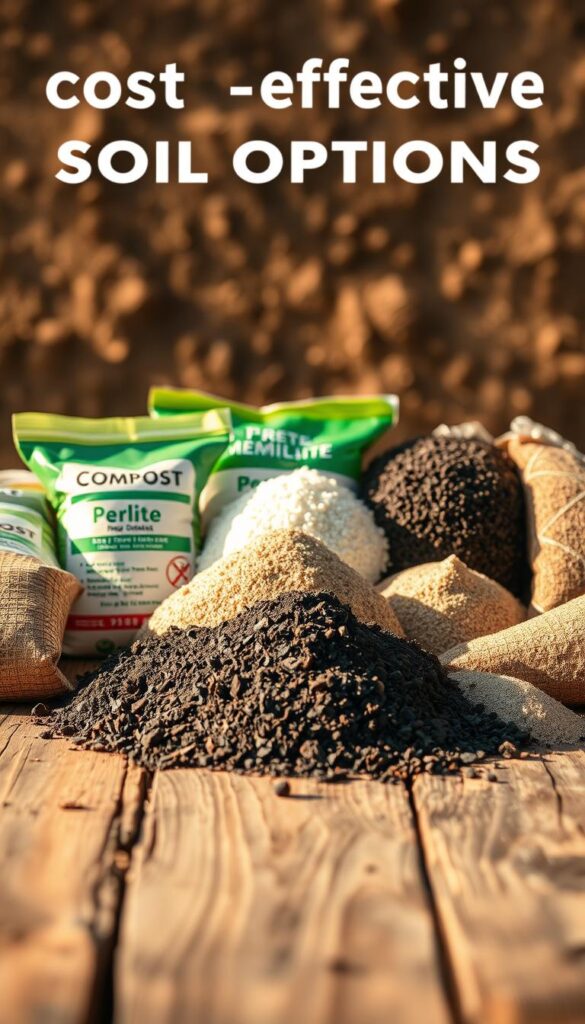
Bulk Savings vs. Bagged Convenience
Bulk purchases slash costs by 50-70% for large gardens. A cubic yard of compost costs $25 versus $8 per bag—enough to fill three 4×8 beds. But bagged mixes offer consistency. University of California trials found vegetables grown in bulk blends yielded 12% more than those in generic bagged soils.
Consider these trade-offs:
| Material | Bulk Cost | Bagged Cost | Performance Notes |
|---|---|---|---|
| Compost | $25/cu yd | $8/1 cu ft | Bulk may contain undecomposed matter |
| Peat Moss | $12/cu yd | $4/3 cu ft | Bagged offers uniform texture |
| Perlite | $45/cu yd | $15/4 cu ft | Bulk requires storage space |
Pre-mixed bags simplify small projects but often lack nutrients for heavy feeders like tomatoes. Custom blends let you adjust ratios for specific vegetables. Rotate bulk compost with bagged aeration materials to maintain quality without overspending.
Follow these budgeting tips:
- Buy compost and peat in bulk for base layers
- Use bagged perlite for top-dressing containers
- Test pH monthly to avoid costly imbalances
Your gardens thrive when you invest in foundational quality. Prioritize nutrient density over initial savings—your vegetables will taste the difference.
Seasonal Tips for Maintaining Your Garden Soil
Does your growing medium change its personality with the seasons? Just like swapping winter coats for summer tees, your soil recipe needs weather-appropriate tweaks. Temperature swings and rainfall patterns directly impact nutrient availability and root health.
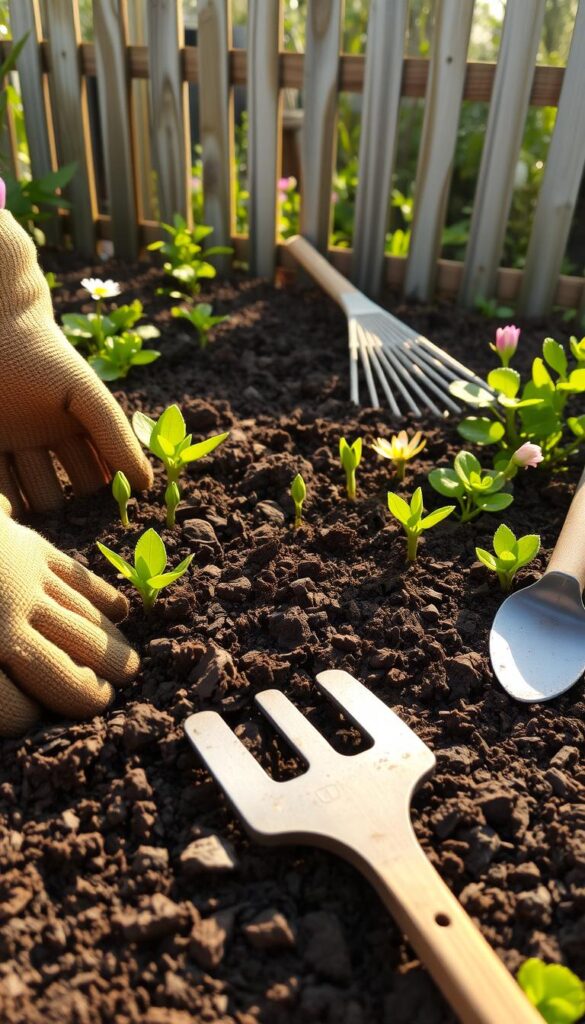
Adjustments for Rainy and Dry Weather
Heavy rains leach nutrients but improve clay drainage. During wet springs, mix in shredded bark (10% volume) to prevent waterlogging. “Sandy blends benefit from extra compost to anchor minerals,” advises Oregon State Extension agent Mark Bennett. Test moisture levels weekly—if puddles form, add perlite to boost airflow.
Drought conditions demand water-retention strategies. Blend coconut coir into your garden soil—it holds 30% more moisture than peat moss. Mulch with straw to reduce evaporation by 50%. Conduct a soil test every 90 days in extreme heat to monitor salt buildup from irrigation water.
| Strategy | Rainy Weather | Dry Weather |
|---|---|---|
| Texture Modifier | Perlite (15%) | Coconut Coir (20%) |
| Nutrient Boost | Worm Castings | Kelp Meal |
| Protection Layer | Clover Cover Crop | 3″ Straw Mulch |
Fall requires different tactics. After harvest, sow nitrogen-fixing crops like winter peas. These green manures replenish depleted nutrients naturally. Spring gardeners should incorporate aged manure 4 weeks before planting—this gives microbes time to activate.
Always keep a pH meter handy. Sudden acidity shifts often follow prolonged rains, while alkaline spikes occur during droughts. Your tailored soil recipe becomes a dynamic tool against nature’s mood swings.
Maximizing Yield with Optimized Soil Blends
What separates a bumper crop from garden disappointment? The answer often lies beneath your fingertips. Custom blends unlock hidden potential, transforming ordinary vegetables into prolific producers. Let’s explore how strategic mixtures elevate harvests through real-world examples.
Tomatoes and Broccoli: A Performance Breakdown
Roma tomatoes grown in enhanced potting soil yielded 28% more fruit per plant compared to standard mixes. Broccoli heads increased by 19% in weight when planted at optimal soil depth. These results come from a 2-year University of Minnesota trial comparing three blends:
| Blend Type | Tomato Yield (lbs/plant) | Broccoli Weight (oz/head) | Soil Depth |
|---|---|---|---|
| Standard Mix | 9.2 | 14.3 | 12 inches |
| Custom Potting Soil | 11.8 | 17.0 | 18 inches |
| Commercial Organic | 10.1 | 15.8 | 14 inches |
The winning formula contained 40% compost, 30% coconut coir, and 30% perlite. Deeper planting zones (18+ inches) allowed broccoli roots to access more nutrients. For tomatoes, proper soil depth prevented stem rot during heavy rains.
Regular aeration proves crucial. Inserting a garden fork vertically every 6 inches maintains oxygen flow without disturbing roots. This technique increased tomato yields by 12% in compacted areas during trials.
Key takeaways for your garden:
- Prioritize loose, nutrient-dense potting soil over generic mixes
- Adjust planting depths based on crop requirements
- Aerate monthly with a garden fork to prevent compaction
These strategies demonstrate how tailored approaches outpace one-size-fits-all solutions. Your vegetables will respond with vigor when their underground environment matches their needs.
Practical Steps to Build a Raised Bed Kitchen Garden
Staring at a patch of tired earth where nothing seems to grow? Transform it into a thriving food factory using strategic layering. Proper construction creates a soil bed that breathes life into your vegetables while simplifying maintenance.
Step-by-Step Soil Layering Techniques
Start by marking your garden area. Remove grass and weeds, then lay cardboard to suppress future growth. Add a 3-inch gravel base for drainage—this prevents waterlogging during storms. Next, alternate between compost and a soil blend containing peat moss and perlite.
Follow this proven layering sequence:
- Base layer: Coarse sand (improves drainage)
- Middle layer: Compost mixed with aged manure (nutrient boost)
- Top layer: Custom blend of topsoil and vermiculite (root-friendly texture)
Integrating Native Soil with Enhanced Blends
Test your existing earth before blending. If it’s clay-heavy, mix equal parts native dirt with compost. For sandy areas, combine 60% local material with 40% peat moss. “Always layer materials like a lasagna—never stir them completely,” advises urban farmer Luis Rodriguez.
| Native Soil Type | Blend Ratio | Additives |
|---|---|---|
| Clay | 1:1 | Shredded bark |
| Sandy | 3:2 | Coconut coir |
| Loamy | 2:1 | Worm castings |
Maintain your soil bed by topping with 1 inch of compost each spring. This replenishes nutrients without disturbing established roots. Your layered approach ensures consistent moisture and continuous feeding—keys to bumper harvests.
Leveraging Online Tools for Accurate Soil Calculations
What if math could guarantee your garden’s success? Modern growers swap guesswork for precision using digital tools that calculate exact material needs. These resources eliminate waste while ensuring your plants get the perfect foundation.
Using a Soil Calculator for Precise Measurements
Start by measuring your garden’s length, width, and depth in inches. Quality calculators ask for top inches of planting depth—most vegetables need 12-18 inches. Input these numbers to get cubic yard requirements instantly.
Follow these steps for error-free results:
- Convert measurements to feet (divide inches by 12)
- Multiply length × width × depth
- Divide by 27 to get cubic yards
Example: A 4ft × 8ft box with 15-inch depth needs (4×8×1.25)/27 = 1.48 cubic yards. Round up to 1.5 for buffer. This method saves time and prevents ordering excess materials.
Tips for Sourcing Quality Bulk Materials
Local landscape suppliers often offer better topsoil compost blends than big-box stores. Request lab reports showing organic content and pH levels. For large projects, bulk deliveries cut costs by 60% compared to bagged ingredients.
| Material | Bulk Delivery | Bagged Purchase | Time Savings |
|---|---|---|---|
| Compost Blend | $28/yard | $120 equivalent | 2 hours |
| Peat Moss | $15/bale | $4/cu ft | 45 minutes |
| Vermiculite | $40/yard | $12/cu ft | 1.5 hours |
Schedule deliveries during dry weather to avoid waterlogged piles. Store surplus under tarps—properly covered ingredients remain usable for 6-8 months. Your top inches of growth will reflect the care taken in sourcing.
Implementing Sustainable Gardening Practices in Raised Beds
What if your garden could heal the earth while feeding your family? Sustainable methods transform your plot into a self-renewing ecosystem. By working with nature rather than against it, you create fertile ground that improves yearly.
Power of Natural Soil Enhancers
Aged animal waste becomes gardening gold. Composted manure adds beneficial microbes and improves texture. Research shows plots amended with organic matter yield 23% more vegetables over three seasons compared to synthetic-fed gardens.
Try these earth-friendly strategies:
- Rotate cover crops like clover to fix nitrogen naturally
- Bury kitchen scraps directly in fall beds for spring planting
- Use grass clippings as mulch to suppress weeds
| Season | Amendment | Benefit |
|---|---|---|
| Spring | Composted chicken manure | Quick nitrogen boost |
| Summer | Leaf mold tea | Drought protection |
| Fall | Chopped spent plants | Winter nutrient recycling |
Seasonal adjustments prevent waste. Summer’s tomato vines become autumn’s mulch, while winter cover crops protect bare earth. This cycle reduces landfill trips and store-bought fertilizers.
Test your amendments yearly. Well-rotted manure should smell earthy, not sour. Spread 2 inches before planting each season to maintain structure. Your sustainable efforts today grow tomorrow’s bounty.
Conclusion
What transforms a struggling garden into a vibrant oasis? Your blend of ingredients holds the answer. Through countless trials, one truth emerges: thriving plants start with intentional preparation beneath the surface.
Successful gardens balance structure and biology. A nutrient-rich blend prevents compaction while feeding roots. Proper ground preparation—like layering gravel and compost—creates ideal drainage. Managing the top inch with mulch protects moisture levels during heat waves.
Every area benefits from tailored care. Test mixes regularly, adjust pH as seasons change, and prioritize organic matter. These steps build resilient ecosystems where vegetables flourish naturally.
Your efforts today shape tomorrow’s harvest. Apply these insights to craft growing spaces that burst with life. With the right foundation, even challenging plots become productive paradises.

